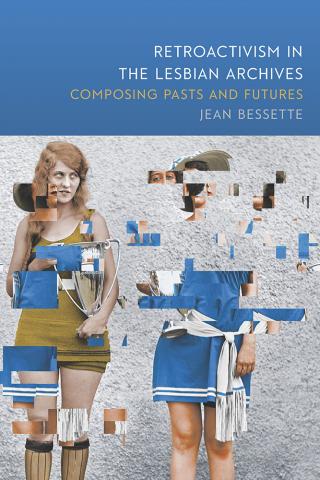Introduction

Bessette, Jean. (2018). Retroactivism in the Lesbian Archives: Composing Pasts and Futures. Carbondale, IL: Southern Illinois Univeristy Press.
In her 2018 Retroactivism in the Lesbian Archives, Jean Bessette examined how queer and lesbian historiographers have composed archives across various media in order to challenge hegemonic claims of deviance, bring embattled individuals together within mutual communities, and reveal more accurate depictions of lesbian identity. Lesbian rhetors, Bessette maintained, have been able to accomplish such aims through what she termed "retroactivist rhetoric," which deconstructs cis-heterocentric narratives of the past in search of missing pieces that can then shape lesbian identity and propel sociopolitical change. To this end, Bessette contended, lesbian archives tend to employ retroactivist rhetoric as a means of imagining, appropriating, and preserving queer versions of the past that would otherwise be erased.
For Bessette, archivization is both a political and a rhetorical process, especially for marginalized groups whose rhetors are often pushing against dominant narratives simply by declaring that their stories are worth telling and preserving. To this end, her book investigated four particular forms of lesbian archives in the United States and analyzed how the lesbian collective(s) that created each one employed unique rhetorical strategies in order to contest oppressive discourses. Retroactivism's four chapters focused on anecdote-based textual assemblages by the Daughter of Bilitis (DOB), place-based collections in the Lesbian Herstory Archives (LHA) and June L. Mazer Archives (JLMA), documentary-style films via New Queer Cinema filmmakers, and digital videos created by online platform users. With each archival form, Bessette demonstrated how rhetors leverage retroactivist rhetoric and available technologies to document versions of the past for both current and future generations.
As a whole, Retroactivism in the Lesbian Archives called for increased dialogue between feminist rhetorics and queer rhetorics, while also challenging readers to consider how such rhetorics are used in inventive ways to contest, shape, and mobilize lesbian identity in the face of hegemonic erasure. And Bessette accomplished these two related but distinct projects with skill, finesse, and dexterity, especially given some of the constraints she faced regarding the archives themselves. Most of the archives that she examined are either limited within a single space, relatively undertheorized even within queer studies, or else recent enough that neither queer studies nor rhetoric/composition studies has yet had time to address them adequately.
However, Bessette was right to notice that their obscurity and complexity does not make these archives any less valuable, either as bastions of queer history or as artifacts worthy of rhetorical analysis. Ultimately, Retroactivism provided a compelling and accessible case for the importance of retroactivist rhetoric, particularly among marginalized communities who cannot count on the dominant culture to acknowledge or represent their stories.